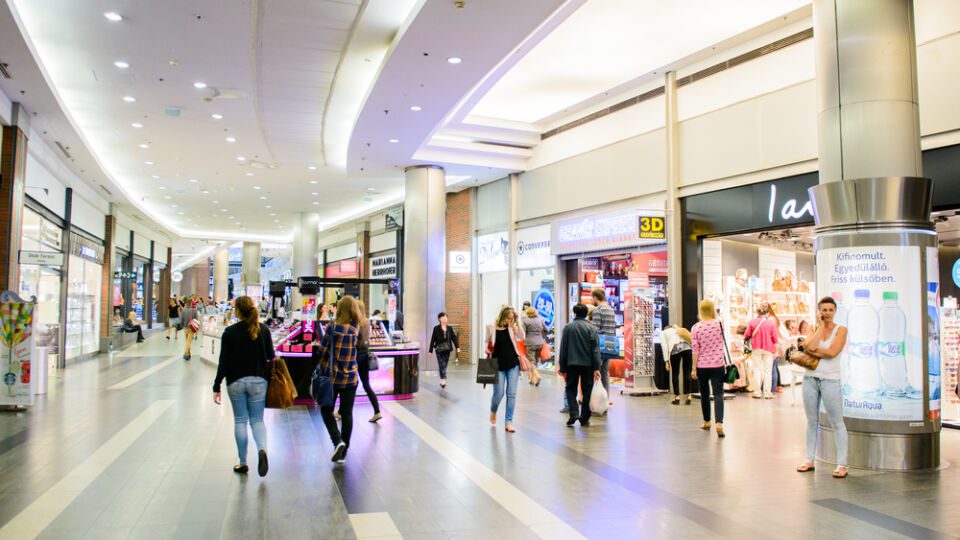The pandemic has weighed heavily on brick-and-mortar retail in general and shopping centers in particular, but the industry is now emerging into a new world with new opportunities. While digital sales skyrocketed in 2020, the similarly large spike in store-based fulfillment showed that stores are still a vital part of the equation. And while the pandemic meant quick, efficient shopping trips by consumers, as more people are vaccinated they will increasingly be interested in full-scale outings and longer dwell times.
“During the pandemic, shoppers were really efficient,” said Tom McGee, President of the International Council of Shopping Centers (ICSC) in an interview with Retail TouchPoints. “They wanted to get out and didn’t linger in stores, or walk around aisles or window shop. I think you’re going to have a lot more of that once people return. Some of the resistance to safety precautions was that shoppers wanted socialization and wanted to get back out, so there is a tremendous amount of demand in the marketplace.”
Shopping centers are perfectly positioned to meet this demand for socialization, provided they have the right experiences in place to welcome customers back. Some of the most important considerations they will need to make in the coming months include:
- Finding new uses for unused spaces: Indoor malls were hit hard by the lockdown and shoppers’ reluctance to dawdle during shopping trips, but empty storefronts and parking lots can become homes for next-gen experiences;
- Taking advantage of outdoor shopping: Customers have been cooped up for a year, and as restrictions ease bustling streets will become their own form of advertising — from busy sidewalks to influencer visits; and
- Working in tandem with tenants: Now more than ever, retail landlords and their tenants need to work hand in hand to prepare for the return of foot traffic, communicating with each other to make the new experience as compelling as possible.
Empty Mall Space Makes the Perfect Home for New Experiences
Retailers closed a record 12,200 stores in 2020, with an outsize share coming from malls and one-third of the total from department stores specifically, according to data from CoStar Group. This means many mall owners will have empty storefronts as traffic ticks back up — but this challenge also offers an opportunity for malls to modernize themselves by encouraging new retail concepts and experiences.
“I think necessity breeds invention and creativity, so shopping center owners are definitely trying to figure out how to leverage or take advantage of opportunities to provide newer and different experiences,” said Michael Lee, VP at CallisonRTKL in an interview with Retail TouchPoints.
One direction for some malls is turning underpopulated sections into “digital districts,” where ecommerce pure plays can try their hand at brick-and-mortar retailing in small-format spaces. The digital natives benefit from a curated location tailored to their audience, while the mall can advertise a slate of cutting-edge concepts.
Empty storefronts also may lend themselves to building connections with the local community through event spaces that can host exhibits or club activities. While these spots won’t bring in the revenue of a traditional retail lease, they provide another incentive to bring shoppers back and add to the experiential value of a mall trip.
“I think you’re going to see some creativity in terms of opportunities for more local types of businesses to take advantage of the spaces, to try to infuse a little bit of that connection with the neighborhood and with the community,” said Lee. “Then the other part you could see is maybe partnering with community groups, whether it be an opportunity to provide some flexible spaces for community events or partnering with artists for a display or installation.”
Mall owners shouldn’t focus solely on what happens inside. Parking lots are built to handle peak holiday capacity, so all that empty space can be put to good use during the remainder of the year. They can serve as anything from staging grounds to fulfill orders from multiple retailers at a communal “curbside” to open areas where larger-scale events can take place.
“Traditionally, parking lots were really all about trying to get people in as easily and efficiently as you could so they could use the indoor environment,” said Lee. “I think what we’re seeing now is retailers and shopping center owners looking at how to capitalize on that space not just as a place for people to park, but as a place for fulfillment. They are also using the space for transitional or pop-up events for retailing and or fitness. I think they understand that there’s a lot of untapped availability to utilize multipurpose parking lots moving forward.”
Outdoor Shopping Centers Should Make the Streets Feel Alive
Outdoor shopping centers have a distinct advantage during this recovery period: people have been more comfortable outside than inside throughout the pandemic. Shoppers may still be hesitant to return to their old habits in large numbers, but it will be easier to convince them to come back outside.
Retailers and shopping centers alike should take advantage of the return of traffic by posting photos on social media, putting out signs and making themselves feel as open and welcoming as possible. Even social distancing can provide an advantage as shoppers see lines out the door — provided they’re orderly and not too long, they may be curious what makes that store so popular.
Restaurants are an important part of the outdoor shopping center ecosystem as well, and the expected return to sidewalk dining in the spring will be a particularly valuable asset for retailers looking to drum up interest. They add a vibrancy that will make cooped-up shoppers eager to return to old habits.
“The sidewalks have expanded somewhat and the restaurants have opened up to outdoor dining,” said Philippe Lanier, Principal at real estate, tech and lifestyle firm EastBanc in an interview with Retail TouchPoints. “Over time that’s evolving to be an organic visual extrapolation of the urban experience. Georgetown [in Washington D.C.] today is a lot more fun to walk through than it was three years ago, because you get to do a lot more and the personality of the retailers come out.”
Exposure shouldn’t be limited to passing foot traffic. EastBanc has been taking a variety of approaches to marketing the stores at its properties, including one that is usually associated with beauty brands: influencer partnerships. The relationship may seem a bit unusual, but it offers new kinds of exposure for both parties.
“I think the [marketing tactic] that I enjoyed the most was getting influencers to come through and shop at our stores and really advertise what they enjoyed about the experience,” said Lanier. “We did it in a way that encouraged them to be honest and just say what they liked. ‘Tell us what you liked and share with your crowd.’ Hopefully, it inspires other people to try it out too. When we market with them we can help them create exposure on the street that they weren’t able to do in the past.”
Shopping Center-Tenant Communication Will Drive Future Success
Shopping centers and their tenants are in this together, and either both — or neither — will ride the recovery to future success. Both parties need to keep abreast of the latest trends as traffic returns and shopping habits continue evolving, and both need to be on the same page when it comes to developing strategies for complex additions like mall-based curbside fulfillment.
“The best shopping centers are going to be structured in such a way to support their tenants,” said McGee. “Whether that’s the parking lot or the mix of stores within the center and how those stores are curated or situated, all are going to be one of the decision factors that tenants will look to where they’re placed in the shopping center. Owners and developers are going to think about the right mix for customer flow. It will be about the strategies those retailers use for curbside pickup and click-and-collect.”
With so much at stake and so many variables in play, these conversations need to go all the way to the top. The end of the pandemic means that not simply recovery but growth could be in sight, but shopping centers need to be firing on all cylinders to adapt to the next normal in retail.
“I practice what I preach,” said Lanier. “Now that things are loosening up a little bit, I will be encouraging all of my property managers to regularly interact with the managers of the stores, to constantly check in and see how the experience is going. I want that data as well. I want them to hear from the tenants what’s working, what’s not working and whether there’s anything we can do to help. Then I want to hear the same thing from the property managers to know if there’s something I can do, a bigger picture that filters through all of them.”













